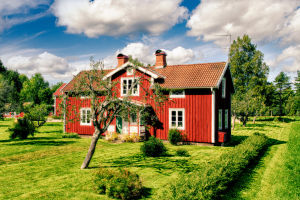Capture Earth’s Beauty
Have you ever stood in front of a majestic mountain or peaceful lake and wished you could freeze that moment forever? We’ve all felt that. Landscape photography gives us the power to keep nature’s beauty in our hands.
Today, let’s explore 9 easy-to-use but powerful techniques that can help us take better landscape photos—whether we use a camera or just our phones.
1. Scout the Spot Before Shooting
Before pressing the shutter, let’s walk around and really look at the scene. Which angle has the best light? Is there something interesting in the foreground? Even a small step to the left or right can totally change our photo. If we explore before shooting, we’ll find stronger compositions and better stories in our frames.
2. Use Leading Lines to Draw the Eye
Paths, rivers, fences, and roads can all guide the viewer’s eyes through our photo. These are called leading lines, and they help tell a visual story. When we place them carefully, they can lead the viewer from the front of the image all the way to the background. This creates a feeling of depth and makes the scene more inviting.
3. Frame It Naturally
We can use trees, rocks, windows, or even arches to create a natural frame inside our photo. This technique draws focus to the center and gives the picture a unique look. Next time we’re outdoors, let’s look around and see if nature can help us build a “frame within the frame.”
4. Add a Human Touch
Including a person in the scene—not as the main subject, but as a part of the landscape—can add scale and emotion. A person walking, standing, or even sitting in the distance shows how large the surroundings are and gives the photo a sense of place and connection. It also makes the image more relatable to viewers.
5. Shoot in Different Weather Conditions
Bright sunny days are lovely, but sometimes fog, rain, or snow adds mood and drama to a photo. Don’t be afraid to go out when the weather changes. Even cloudy skies can create soft, even lighting. The unexpected moments in nature often lead to our most memorable photos.
6. Don’t Zoom—Move!
Instead of zooming in with our camera or phone, let’s move closer or farther to change our composition. Physically changing our position gives us more creative control. When we move, we see new perspectives, hidden elements, or interesting angles that we would’ve missed by just standing still.
7. Be Patient and Wait for the Moment
Sometimes we arrive at a place and it just doesn’t look right. Maybe the light is too strong, or the sky is plain. In those moments, patience is key. We can wait for the sun to lower, for clouds to drift in, or for animals or people to enter the frame. Great landscape photos often come to those who wait.
8. Use Reflections to Double the Beauty
If we’re near a lake, pond, or even a puddle, let’s try to include reflections in our shot. Reflections create symmetry and a sense of calm. They also double the visual interest, making our photos stand out. Remember to shoot early in the morning or late in the day when the water is still for the best mirror effect.
9. Practice Makes Magic
The more we go out and shoot, the more we improve. We learn how light changes, how our gear works, and how to spot a great composition. Let’s treat every outing as a learning experience. We can take photos, review them later, and think about what worked and what didn’t. Step by step, we’ll see real progress.
Let’s Keep Exploring Through the Lens
Lykkers, landscape photography isn’t just about getting the “perfect shot.” It’s about enjoying nature, expressing our creativity, and capturing moments that move us. With these 9 tips, we’re not just taking pictures—we’re learning to see the world in a new way.
So next time you’re outdoors, bring your camera or phone, look around with fresh eyes, and trust your instincts. If you snap something amazing, share it with us—we’d love to see what beauty you’ve captured in your own corner of the world.
-
 Hip-Hop PowerHow Hip-Hop Culture Rose from the Streets and Took Over the Global Music Scene
Hip-Hop PowerHow Hip-Hop Culture Rose from the Streets and Took Over the Global Music Scene -
 Soundtrack Soul TouchWhy Do Some Movie Scores Make Us Cry, Cheer, or Remember Forever? Discover the Power of Iconic Film Music!
Soundtrack Soul TouchWhy Do Some Movie Scores Make Us Cry, Cheer, or Remember Forever? Discover the Power of Iconic Film Music! -
 Capture Countryside MagicWhy Your Countryside Photos Look Flat (And How to Fix It Fast!)
Capture Countryside MagicWhy Your Countryside Photos Look Flat (And How to Fix It Fast!)
Contact to : xyjph123@gmail.com
Privacy Agreement
Copyright © boyuanhulian 2020 - 2022. All Right Reserved.
Privacy Agreement
Copyright © boyuanhulian 2020 - 2022. All Right Reserved.